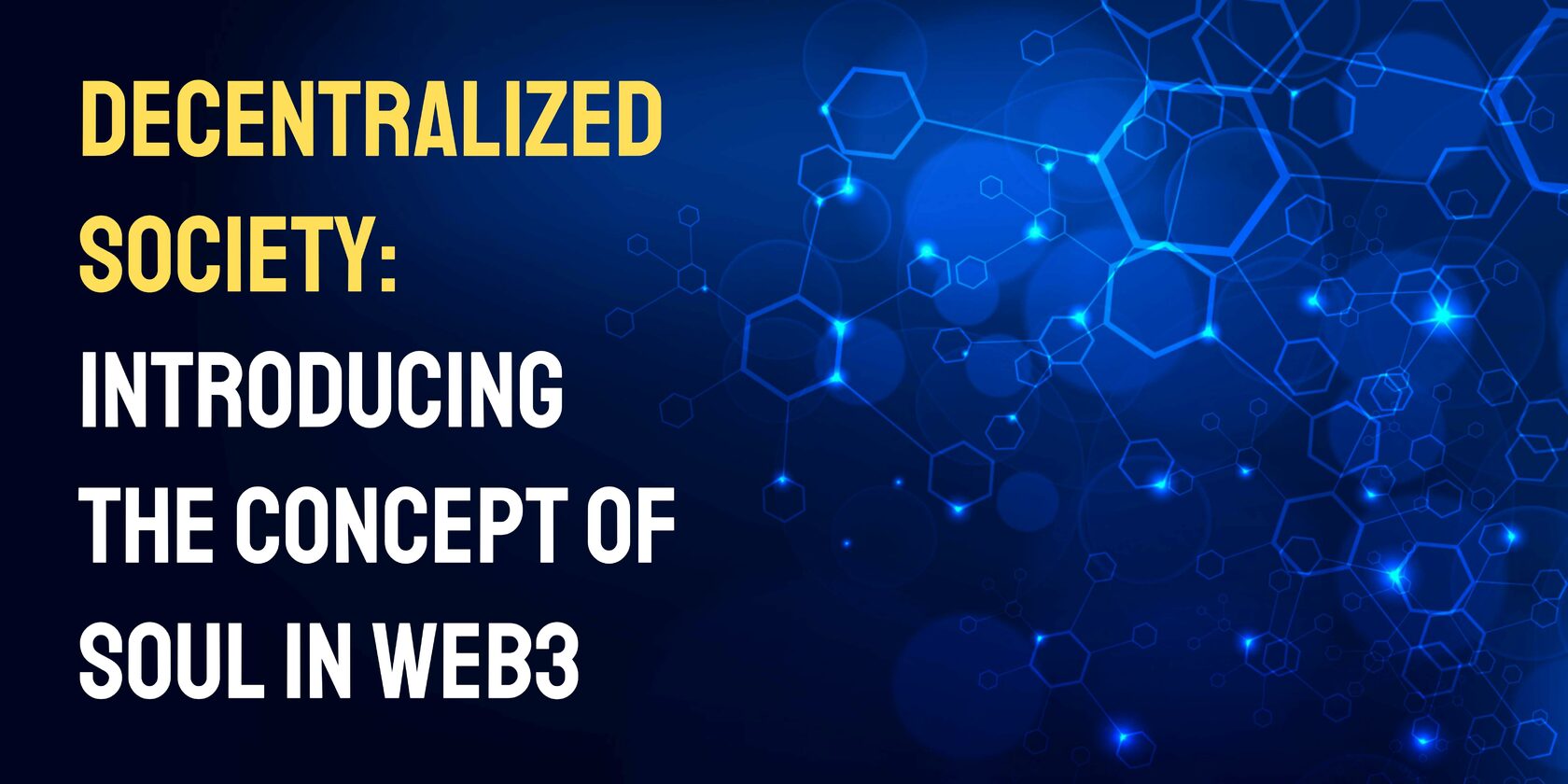Web3.0 enthusiasts believe that mutual, fractionalized and NFT-based digital ownership brought by this new iteration of the world wide web will lead to a trustless and incentive-based economy.
In the third generation of the internet, all devices and databases will be connected in a network rather than relying on server-based mainframes. The decentralization is supposed to make transactions and secret sharing more secure while presenting new business opportunities. Such a system will turn each stakeholder into a partial owner of a company, thus making them ownerless and more resilient to economic turbulence.
Decentralized society and (actual) social rating
Recently Ethereum creator Vitalik Buterin, scholars from Microsoft Research and Flashbots Ltd. E. Glen Weyl and Puja Ohlaver published an article called “Decentralized Society: Finding Web3’ Soul”. They touched upon the idea of the digital soul and digital karma — a form of decentralized social rating. The key idea here is that the rating will not be given by any kind of higher authority, regular people and institutions will attribute to persons they encountered.
To make it more verifiable, the “soulbound tokens” (SBT) will serve as a form of rating points. They will be made in the form of non-fungible tokens (NFT), making them non-interchangeable and impossible to sell.
The idea of soulbounds originated in the World of Warcraft game, distinguishing especially valuable and rare in-game items that only dropped from the toughest enemies. Those items were impossible to sell or exchange which made them unique and only possible to acquire through overcoming hard challenges.
The “soul” in Web3 will look be a cryptowallet or an account with SBTs in it. Only a limited amount of organizations will be allowed to issue such tokens, mainly universities, schools, job places, and so on.
Theoretically, this system will make it possible to prove any achievement in a person’s life. Though it will be possible for a user to issue an SBT featuring some important stage in their lives but they will be less valuable than the ones issued by other persons or companies.
This technology is expected to be especially useful for artists, as their reputation will directly depend on soulbound tokens minted in their works. Thus, people seeking to buy their works will have a valid source of information about the sellers, making transactions more visible and secure.
This system can be integrated into almost all spheres of life, including mortgages and bank loans. For example, a person may use their SBTs as loan security, making the whole process faster and easier. The authors of the article also note that soulbound token owners can act together, forming “soulbound constellation”, where members can vouch for each other, thus making their SBTs more credible.
Organization and security of the technology
The idea is to deliver SBTs to various companies via souldrops. The technology makes it possible to prioritize and specify spheres where the companies work. This will make it possible for ecology-oriented companies to award their members with eco-SBTs for every ecological milestone achieved. Same works for virtually any sphere with both consumers and suppliers benefiting from the clear and understandable rating system.
Since the digital reputation will play a great role in people’s lives while being very hard to improve, there will certainly be people eager to find shortcuts. If malicious actors were to acquire access to a person’s SBT wallet, they could potentially ruin their life and career. To avoid that the system is based on blockchain with sophisticated crypto protection technologies in place.
But apart from that, the authors advocate for decentralized autonomous organizations (DAO) to serve as a “neighbors’ watch” of a sort. A person within a DAO can choose a number of people who do not know each other but are familiar with the person in question. Then, in case their SBTs got stolen, the DAO community can get together and vote on giving this person access back. The system will function in the same way, as human communities worked for thousands of years but with the digital aspect in place.
The authors describe the security of the system as “A more robust solution is to tie soul recovery to a soul’s memberships across communities, not curating but instead drawing on a maximally broad set of real-time relationships for security. Recall that SBTs represent memberships to different communities. Some of these communities—like employers, clubs, colleges, or churches—might be more o-chain in nature, while others—like participation in protocol governance or a DAO—might be more on-chain. In a community recovery model, recovering a soul’s private keys would require a member from a qualified majority of a (random subset of) soul’s communities to consent”.
SBTs as the future of IP
Soulbound tokens may also be used to transfer intellectual property (IP) rights on both digital and regular items. For example granting people access to private or public spaces like cars, houses, museums, parks, and to their digital avatars as well.
SBTs can regulate data frames, allowing only trusted members to interact with it creating censorship-resistant, bottom-up solutions for easier knowledge transfer.
The risks of the decentralized society
The authors are aware of the dangers SBTs may pose. Malicious actors may use them to trick a bank into an unlawful loan or to discriminate against certain social groups.
Another problem is confidentiality as there is no clear border to which the information about a person’s life can be shared. Not mentioning, that people tend to try and look better than they really are. In this case, coordinated efforts may make someone’s reputation significantly better than it should be.
The concept is very promising but there still are a lot of problems and boundaries that the authors need to overcome to leave alternatives behind. For now, some of the problems mentioned can already be solved by solutions such as CADChain’s BORIS We use your unique digital signature to secure your intellectual property and we don’t even ask you to give us your soul for that. Not yet.


